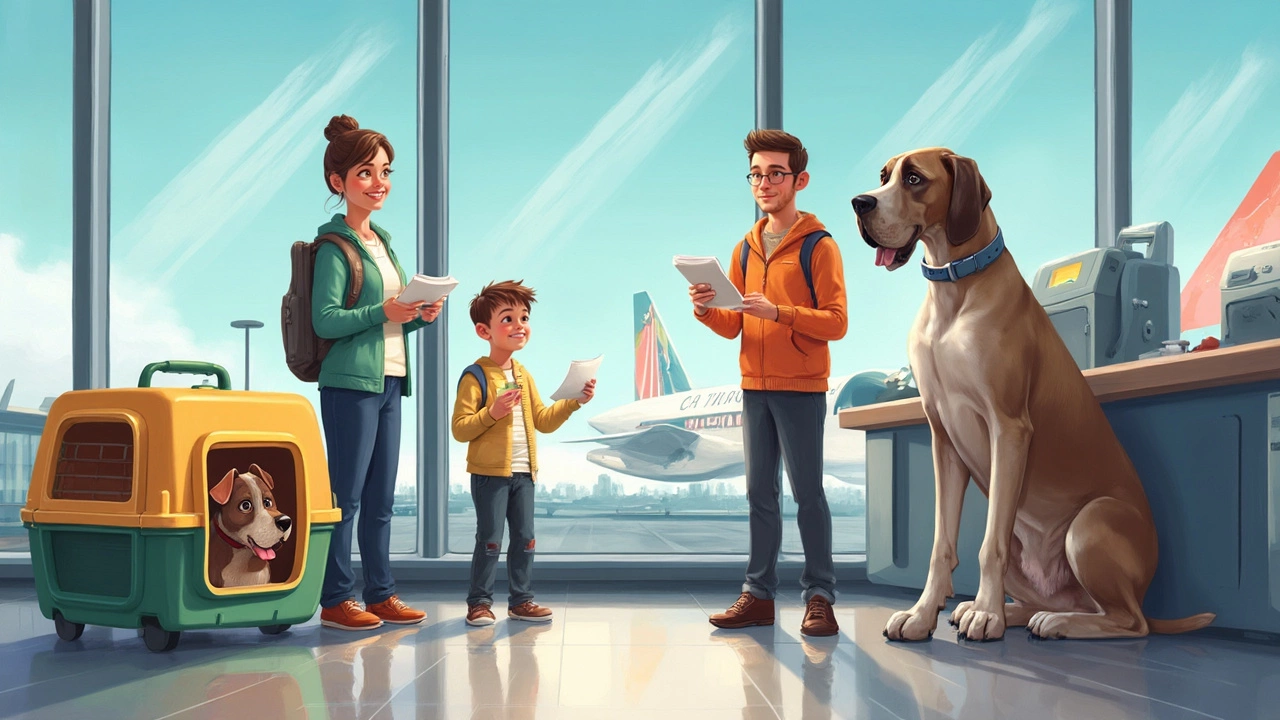Cabin vs Cargo: What Every Dog Owner Should Know Before Flying
Got a pup and a plane ticket? The first question is whether your dog should travel in the cabin with you or in the cargo hold. Both options have pros and cons, and the right choice depends on your dog’s size, health, and temperament. Below we break down the key differences, the risks you might face, and practical steps to keep your dog calm and safe no matter where they fly.
Understanding Cabin and Cargo Flights
In‑cabin travel means your dog stays inside a carrier that fits under the seat in front of you. Most airlines allow dogs up to 15‑20 lb, so small breeds are the usual candidates. The big advantage is that you can see and soothe your pet throughout the journey, which reduces anxiety for both of you.
Cargo travel, on the other hand, places your dog in a temperature‑controlled compartment separate from the passenger cabin. This is the only option for dogs over the cabin weight limit or for breeds that airlines restrict from the cabin. Modern cargo holds are pressurized and climate‑controlled, but the environment can still be noisy and unfamiliar, which may trigger stress.
Health is a major factor. Dogs with heart, lung, or joint issues often do better in the cabin where you can monitor them. Puppies under eight weeks, senior dogs, or animals with a history of motion sickness are usually advised to stay with you. If your vet clears your dog for cargo, make sure the airline follows IATA’s live‑animal regulations for temperature, ventilation, and handling.
Practical Tips to Keep Your Dog Calm
1. Choose the right carrier. For cabin travel, pick a soft‑sided carrier that meets airline dimensions and has good ventilation. For cargo, use a sturdy crate with a secure latch, a non‑slip floor, and a water dish that won’t tip over.
2. Acclimate early. Let your dog spend a few nights in the carrier before the flight. Add a familiar blanket or a favorite toy. The more the crate feels like a normal space, the less it will seem like a prison on the day of travel.
3. Mind the feeding schedule. Give a light meal 4‑5 hours before departure and skip treats right before take‑off. This reduces the chance of an upset stomach in the cargo hold or under the seat.
4. Hydration is key. Offer water up to an hour before the flight, then provide a small sip right before you board. In cargo, attach a spill‑proof water bottle to the crate’s side so your dog can sip if the flight is long.
5. Use calming aids wisely. Vet‑approved calming chews, pheromone sprays, or a low dose of medication can help nervous dogs. Avoid over‑sedating; a sleepy dog may not regulate its temperature well.
6. Check airline policies. Different carriers have varying rules for cabin and cargo, including health certificates, breed restrictions, and temperature limits. Always double‑check the latest guidelines before you book.
7. Plan arrival logistics. Once the plane lands, cargo dogs are usually taken to a special loading area. Arrive early, have your carrier ready, and let staff know you’re waiting for your pet. A calm handover makes the transition smoother for your dog.
Ultimately, the choice between cabin and cargo boils down to size, health, and how well your dog handles new environments. Small, calm dogs often thrive in the cabin, while larger or older dogs may be safer in a well‑managed cargo hold. By preparing the carrier, following feeding rules, and using vet‑approved calming methods, you give your pup the best chance for a stress‑free flight.
Ready to book? Grab a compliant carrier, check the airline’s pet policy, and give your vet a quick call. With the right prep, you and your dog can enjoy the journey as much as the destination.
Pets in Cabin vs Cargo: What's Best for Your Furry Friend?
Deciding whether to bring your pet in the cabin or cargo during flights can be tricky. Cabin travel offers constant familiarity and comfort, while cargo can accommodate larger pets or multiple animals. This article breaks down what you need to consider, from the size and breed of your pet to airline policies. You'll find practical tips to make your decision easier and ensure a smooth journey for your pet.
